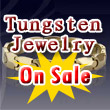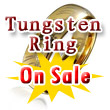Material Safety Data Sheet (MSDS)
Material Safety Data Sheet Of Tungsten And Tungsten Materials
CHEMICAL NAME:
Tungsten and tungsten material, tungsten-nickel-copper or tungsten-nickel-iron heavy alloy
Trade Name and Synonyms: All CHINATUNGSTEN ONLINE’S TUNGSTEN PRODUCTS
Chemical Family: Refractory Metal Carbide
Molecular Weight: N/A
| PHYSICAL DATA | |
| Appearance and Odor: Dark Gray Metal/No Odor | |
| Boiling Point: 5927℃ | Specific Gravity (H20=1): 11.0 to 15.5 |
| Vapor Pressure (mm Hg): N/A | Percentage Volatile by Volume: 0 |
| Vapor Density (Air=1): N/A | Evaporation Rate: N/A |
| Solubility in Water: Insoluble | How Best Monitored: Air Sample |
| HAZARDOUS INGREDIENTS | |||
| Material | % by Weight | OSHA PEL | ACGIH TLV |
| Tungsten Carbide (limits Tungsten dust) | 41-97%* | --- | 5 mg/m 3 |
| Cobalt and other elements | 3-10% * | 0.1 mg/m3 | 0.1 mg/m3 |
| Depends on grade specifications | |||
HEALTH HAZARD DATA
Routes of Exposure: Production and applying process might bring about dust of potentially hazardous ingredients, which can be inhaled, swallowed or come in contact with the skin or eyes.
Effects of Overexposure:
Inhalation - Dust from grinding can cause irritation of the nose and throat. It has also has the potential for causing transient or permanent respiratory disease, including occupational asthma and interstitial fibrosis, in a small percentage of exposed individuals. It is reported that cobalt dust is the most probable cause of such respiratory diseases. Symptoms include productive cough, wheezing, shortness of breath, chest-tightness and weight loss. Interstitial fibrosis (lung scarring) can lead to permanent disability or death. Certain pulmonary conditions may be aggravated by exposure.
Skin Contact –Can cause irritation or an allergic skin rash due to cobalt sensitization in case tungsten be used in production process. Certain skin conditions, such as dry skin, may be aggravated by exposure.
Eye Contact - Can cause irritation.
Ingestion - Reports outside the industry suggest that ingestion of significant amounts of cobalt has the potential for causing blood, heart and other organ problems.
Emergency and First Aid Procedures: Applicable for dusts or mists.
Inhalation - If symptoms of pulmonary involvement develop (coughing, wheezing, shortness of breath, etc.), remove from exposure and seek medical attention.
Skin Contact - If irritation or rash occurs, thoroughly wash affected area with soap and water and isolate from exposure. If irritation or rash persists, seek medical attention.
Eye Contact - If irritation occurs, flush with copious amounts of water. If irritation persists, seek medical attention.
Ingestion - If substantial quantities are swallowed, dilute with a large amount of water, induce vomiting and seek medical attention.
Carcinogenic Assessment (NTP Annual Report, IARC Monographs, other):
None of the components of this material have been identified as known suspected carcinogens by NTP, IARC or OSHA
Chemical Name:
Tungsten and tungsten material, tungsten-nickel-copper or tungsten-nickel-iron heavy alloy
FIRE AND EXPLOSION HAZARD DATA
Flash Point: N/A ??Test Method Used: --- ???Flammable Limits: N/A ?????LEL:--- ????UEL: ---
Tungsten Particles, High Density Alloy and Hard Cemented Carbide Product are not fire hazards. Dusts generated in grinding operations may ignite if allowed to accumulate and subjected to an ultra-high temperature ignition source.
Extinguishing Media:
For powder, smother with dry sand, dry dolomite, ABC type fire extinguisher, or flood with water.
Special Fire Fighting Procedures:
For a powder fire confined to a small area, use a respirator approved for toxic dusts and fumes. For a large fire, fire fighters should use self-contained breathing apparatus.
Unusual Fire and Explosion Hazards:
During production process, dusts may present a fire or explosion hazard under rare favoring conditions of particle size, dispersion and ultra-high temperature ignition source. However, this is not expected to be a problem under normal packaging and dust-proof handling conditions.
| REACTIVITY DATA | |||
| Stability: | Unstable | Conditions to Avoid: N/A | |
| Stable | X | ||
| Incompatibility: Contact with dust with strong oxidizers may cause fire or explosions. | |||
| Materials to Avoid: Strong Acids | |||
| Hazardous Decomposition Products: None | |||
| Hazardous Polymerization: | May Occur | Conditions to Avoid: N/A | |
| Will not Occur | X | ||
SPILL OR LEAKS PROCEDURES
Steps to be Taken In Case Material is Released or Spilled: Ventilate area of spill. Clean up using methods which avoid dust generation such as vacuum (with appropriate filter to prevent airborne dust levels which exceed the PEL or TLV), wet dust mop or wet clean-up. If airborne dust is generated, use appropriate NIOSH approved respirator.
Waste Disposal Method: Dispose of in accordance with appropriate government regulations. May be sold as scrap for reclaim.
SPECIAL PROTECTION INFORMATION
Respiratory Protection: Use an appropriate NIOSH approved respirator if airborne dust concentrations exceed the appropriate PEL or TLV. All appropriate requirements set forth in 29 CFR 1910.134 should be met.
Ventilation: Use local exhaust ventilation which is adequate to limit personal exposure to airborne dust to levels which do not exceed the PEL or TLV. If such equipment is not available, use respirators as specified above.
Protection Gloves: Protective gloves or barrier cream are recommended when contact with dust or mist is likely. Prior to applying the barrier cream or use of protective gloves, wash thoroughly.
Eye Protection: Safety glasses with side shields or goggles are recommended.
Other Protective Equipment: N/A
SPECIAL PRECAUTIONS
Precautions to be Taken in Handling and Storage: Maintain good housekeeping procedures to prevent dust accumulation during grinding. Avoid dust inhalation and direct skin contact with dust.
Other Precautions: Clean up using methods which avoid dust generation such as vacuum (with appropriate filter to prevent airborne dust levels which exceed the PEL or TLV), wet dust mop or wet clean-up. If airborne dust is generated, use an appropriate NIOSH approved respirator.
Wash hands thoroughly after handling, before eating or smoking. Wash exposed skin at the end of the work shift. Do not shake clothing, rags or other items to remove dust. Dust should be removed by washing or vacuuming (with appropriate filters) the clothing, rags, or other items.
Periodic medical examinations are recommended for individuals regularly exposed to dust or mist.
| EMERGENCY CONTACT INFORMATION | |
| COMPANY: CHINATUNGSTEN ONLINE(XIAMEN) MANU. & SALES CORP. | |
| CONTACT PERSON: DR.HANNS,? MS. CHEN,? MR.LEO | |
| EMERGENCY CALL: +86 592 512 9595? +86 594 7659998 +86 13806045308 | |
| info@chinatungsten.com | |






 sales@chinatungsten.com
sales@chinatungsten.com